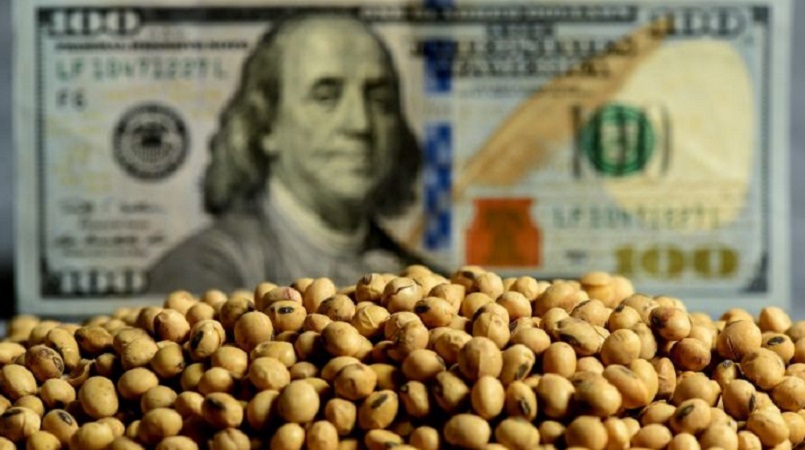
At the close of the market this Wednesday lhe liquidations through the agricultural dollar marked a record of US$ 1,052 million and accumulated US$ 5,080 million since the start of the program in Aprilaccording to data from the Rosario Stock Exchange. Sales that had started at a slow pace due to speculation of soybeans with a strong devaluation, have accelerated in recent days to take advantage of the exchange rate benefit to $300 (against $239). Thanks to this difference the big businessmen in the countryside got extra income of $262,256 million.
Although settlements will continue to be registered until Friday, this Wednesday was the last day to close contracts. To get an idea of what the sum donated by the government to employers implies, it can be compared with what was allocated to the Universal Assignment per Child in April (according to the Congressional Budget Office), $44,713 million, or to the Potenciar Trabajo program , $57,028 million. In other words, rural businessmen were granted six times more than boys and girls or five times more than those who cannot find formal work and have this contribution from the State..
A differential exchange rate means a transfer of income for the employer sectors because they receive more pesos for every dollar paid. For example, the first version of the soybean dollar represented an income transfer of more than $200,000 million, and with the second version of the soybean dollar, it implied an additional profit for agricultural employers of around $130,000 million.
With the settlements this Wednesday, the volume traded in the official exchange market rose to US$1,517 million, which gave the Central Bank (BCRA) the option of keeping US$451 million for its reserves and accumulating a positive balance. for his interventions on the market of US$ 850 million in the month, according to the official entity itself. But in addition to displaying an exception for the last few months, reserves have fallen sharply due to the outflow of dollars through other channels.
Since the beginning of 2023, the balance of the BCRA due to the foreign exchange intervention has been negative by US$2,065 million and international reserves this Wednesday stood at US$32,811 million, the lowest value since October 2016. In the course of 2023, the reserves decreased US$ 11,787 million or 26.4%.
The Frente de Todos sought with this measure to strengthen the reserves of the Central Bank, but the bleeding of dollars does not stop due to the payment of imports, debt interest and the remittance of profits from large foreign companies. Debt payments, both interest and principal, by the private and public sectors led to the squandering of more than US$40 billion between December 2019 and February 2023.
The government’s plan, agreed with the IMF, is to meet the goal of 1.9% fiscal deficit, for which it must deepen the adjustment that has been affecting the vast majority. In this framework, it would not be a surprise if the privileged exchange rates for the different sectors continue to expand. Among the most vulnerable and the IMF, the Frente de Todos chooses to follow the mandates of Kristalina Georgieva.
Source: www.laizquierdadiario.com

